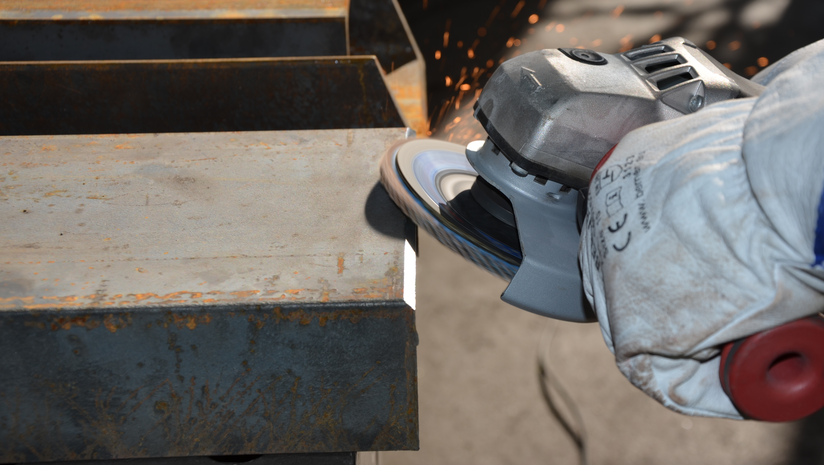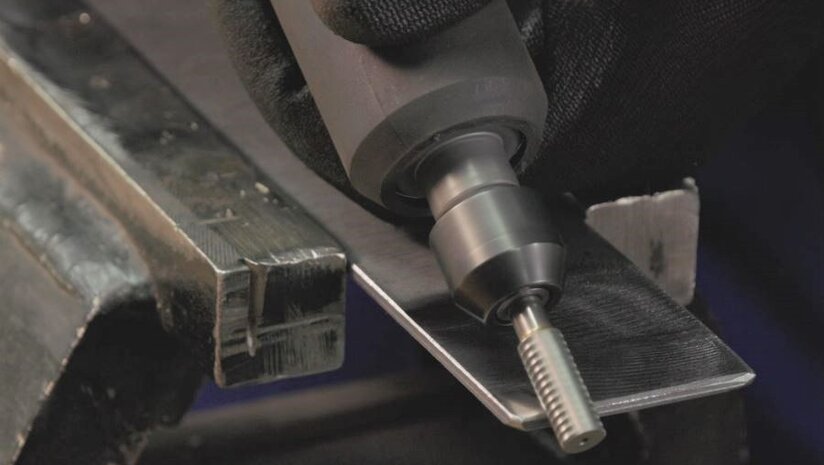
Beveling
If two workpieces are to be welded together, the edge of the workpieces must first be broken by a beveled surface. This is done by machining. The result is a chamfer, also known as a bevel.
What is beveling and
why is it important?
If two workpieces are to be welded together, the edge of the workpieces must first be broken by a beveled surface. This is done by machining. Or in other words, a space is created to accommodate the individual welding layers through which the workpieces are joined together. The bevel can have different shapes. The V-joint, the double V-joint, and the Y-joint are the most common shapes.
Which tool is used for beveling?
The position of the weld, the material of the workpiece, and the types of drives available - the choice of the right tool depends on various factors.
If an angle grinder is available, the beveling can be done with sulfur- and iron-free Osborn flap discs. Flap discs with a conical or straight shape are available. The angle on the workpiece determines the shape of the flap wheel.
If a workpiece made of non-ferrous metal is to be beveled, we recommend an abrasive cloth with a cooling bond as it reduces blue tarnish.

Pictured: Beveling with an Osborn flap disc.
If a straight grinder or air grinder is available, chamfering can be done with carbide burrs. The milling head is made of tungsten carbide-cobalt, the shank of tool steel. Different head shapes and toothings ensure that there is the right solution for every application.
For chamfering, burrs with cross serration (Z6) are the best choice. It ensures high stock removal in a short time. If the surface quality is important, a single tooth (Z3) is recommended. In the shipyard sector, the special shipyard toothing is often used. Compared to the Z6 toothing, it has a 30% higher material removal rate.

Camfering with a carbide burr.
Products for
Beveling.

ATB Uni-Lok® Bridle
Improve the aggressiveness of Osborn’s ATB™ Composite brushes with ATB Uni-Lok® Bridles. Sold in three packs, these Bridles are designed to significantly reduce the flare of filaments to increase rigidity for use on heavy-duty applications. Not for use on ATB™ turbo discs.

ATB™ Cup Brush - Flat Trim
Featuring a precision cut flat trim and premium quality 0.045" x 0.090" rectangular nylon filaments, this Osborn ATB™ Cup Brush is ideal for flat surface finishing and deburring. Brushes are heavily filled with filaments impregnated with choice of Silicon Carbide or Aluminum Oxide and are designed for maximum longevity. Note: 4" brushes include premium quality bridle for maximum filament rigidity.

ATB™ End Brush
Small diameter brush featuring high-performing abrasive nylon filament to quickly and efficiently clean and finish inside diameters, spot facing, and recessed areas. Precision design makes these brushes ideal for operations where balance is critical, as in CNC and robotic use. Attached ¼” stem also allows for use on portable air and electric tools.

Foam Paintbrush
Economical foam brush with chiseled edge and wood handle.

Pure Grey China Bristle Round Sash Brush
Versatile round sash brush for use with oil-base products or as a chip brush. Plastic handle.

Black Polyester Angular Sash Brush
Durable synthetic filaments ideal for use with latex and oil-base paints. Angled trim makes quick work of edging and cutting into corners. Plastic handle.

Black Ployester Wall Brush
Constructed of durable, easy-to-clean synthetic filaments ideal for use with latex and oil-base paints. Solid wood beaver tail handle.

Camel Hair Round Marking Brush
Natural fill with tapered wood handle.

Camel Hair Round Lettering Lacquering Brush
Flexible, natural fill with tapered wood handle.

Pure White Bristle Round Marking Brush
Economical white bristle brush with tapered wood handle.

Synthetic Economy Roller Cover
Cost-effective synthetic with phenolic core. Available in various nap lengths for use on most internal surfaces and exterior areas.
Synthetic Roller Cover
Cost-effective synthetic with phenolic core. Medium nap for use on most surfaces. Its 4” length is ideal for striping driveways and aisleways.